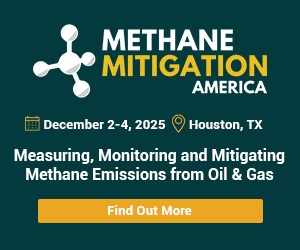VIDEO: IntelliView’s advanced video analytic software detecting simulated leaks at an offshore well pad during a system test.
With the vast majority of offshore well pads and platforms being unmanned and remote, direct detection and confirmation of smaller oil/liquid leaks can take hours and often days due to sensor detection limitations. Missed leaks get discovered during routine personnel visits, which are infrequent. Such product releases pose immediate risk to the platform assets and the offshore environment.
Operating in the open ocean, spills naturally spread quickly, having broad impact on the marine ecosystem. The ability to respond fast is therefore critical in stopping the leak source and containing further spread. And this requires detection and validation times to be significantly reduced. Improved sensor performance and automation of manual monitoring are key.
An evaluation commissioned by a global operator in the Gulf of Thailand in 2019 led to the installation of the IntelliView AI Vision system at multiple well pads over the years. The thermal imaging-based technology is housed in a certified explosion-proof enclosure and powered by real-time patented/proprietary image processing software located onsite. It provides 24/7 monitoring of liquid hydrocarbon leaks, large and small (as little as 1L/s) and can also see fire. The stages of detection, validation and reporting all occur in less than 30 seconds. Alarms are visually verified through video data (at the platform control room or via the web interface).
All systems have been running without downtime, proving to be a low-maintenance, low-bandwidth solution to date. Each system was optimized for the site’s specific detection requirements to deliver optimum performance and accurate alerts.
Making visual monitoring continuous and automated brings many benefits and advantages. Distributed assets can be monitored more efficiently. According to a 2021 third-party performance survey conducted with a US energy major, IntelliVew’s technology reduced monitoring manhours and effort by up to 90%. This aligns with the findings of a 2017 McKinsey study that automating remote maintenance and remote monitoring and control, together with related measures, could raise worker efficiency and asset utilisation by 50% and reduce maintenance costs by up to 40%.1
With faster response, operators can achieve not only their ecological, safety and regulatory goals, but also reduce their financial risks (clean-up bills, penalties, HSE fines, procedure inefficiencies), minimize costs (expensive confirmatory or routine platform visits), and maintain/elevate their good corporate social standing.
Read This Offshore Technology Success Story
This application note will educate operators on:
- the components and features of the IntelliVew technology,
- the system installation procedure and set up recommendations,
- the advantages and benefits that can be gained by augmenting existing monitoring approaches with round-the-clock eyes on site.
For more information on IntelliView’s AI vision system, visit https://intellviiewtech.com or contact us.
1 ‘AI, Jobs and Workforce Automation’, McKinsey & Co., (May 2017), https://www.cloudave.com/
Share This:




 CDN NEWS |
CDN NEWS |  US NEWS
US NEWS 





























COMMENTARY: Selected US States Offer Enormous Advantages for AI Data Centers – Yogi Schulz